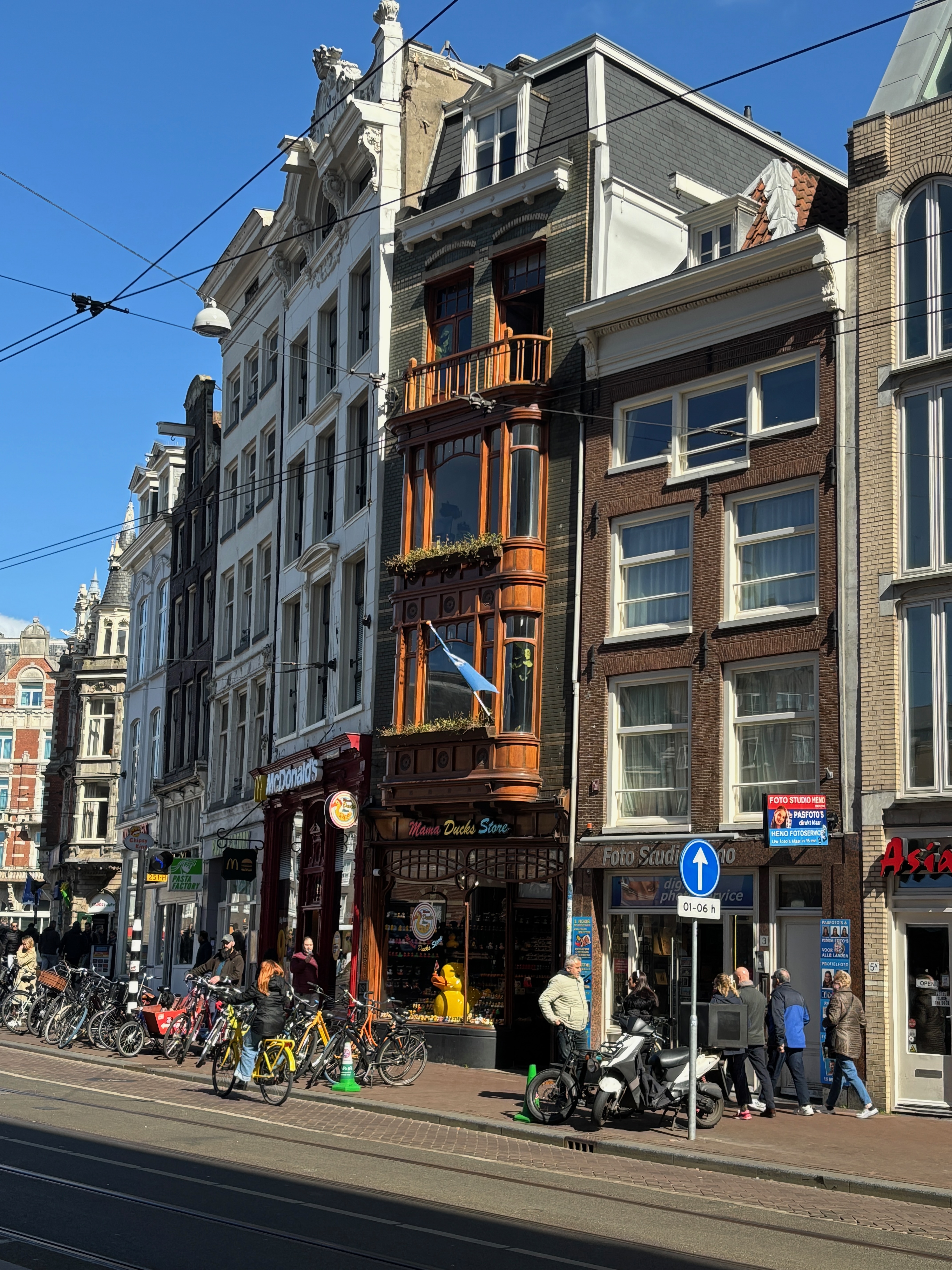I participated in a Hackathon in Amsterdam. It was a great first experience. I spend another day there, before I left.
Some notes
My friend lived near Amsterdam South. This is apparently considered to not actually live in Amsterdam, because you are outside of the Autobahn-circle.
Amsterdam is, for as much as it is mentioned, a comparatively small city - you would expect it to be more populous. It only has around 930 000 inhabitants (the Metro region is around 2.5 million).
On my free following Monday, I went downtown. Once you arrive, you might ask yourself the following: 'How many annual bike incidents does Amsterdam have, and how does that compare to other, non-Dutch capitals?' That number is probably hard to estimate, because most of them will not be reported. You could also try to count the number of tourists who set a wrong foot they quickly take back. During my few hours of walking one bike tourist almost drove in me (and instead fell down from his breaks).

somewhere downtown
I walked along Virgelstreet, with its many coffee shops. There is the City Archive, in a magnific building. If you want to visit it, do not go on a Monday!
The Benninhof is a special place: Only women live here. This is from the info point:
Welcome to Het Begijnhof
The Begijnhof has been located in this quiet place in Amsterdam for more than 600 years. In 1389 the books mention this Beginhof for the first time.
Begijnen were devout catholic single women who did good works, especially in caring for the sick and later in education, but who did not want to live in a monastery and therefore had not taken monastic vows.
In the years 1421 and 1452 there were large fires in Amsterdam. Because the houses at that time were made of wood, all the houses of the Hof were lost during these fires. After this time, the houses were erected again, but this time of stone.
From 1578 to 1795, catholics in Aschmsterdam were not allowed to openly profess their faith and church property was often confiscated when the city government of Amsterdam became protestant.
The Beginen and their houses were left alone. The houses were personal property of the inhabitants and so the Begijnhof was a catholic enclave in predominantly protestant Amsterdam for more than 200 years.
The gothic Beginhof church in the middle of the court was donated by the city council to the protestant English church community in 1607. The Beginen were then forced to use 'hidden' churches to practice their faith. In 1671 two houses (no 30 and 31) were merged and rebuilt by master builder Philip Vingbooms to an 'official' hidden church. This is now called the 'Beginhof Chapel.
Begijn Cornelia Arens, who died on 2 May 1654, did not allow herself to be buried in the English church, although she had the right to do so. Because her relatives had become protestants, she chose, as a penance, to be buried under the church path. Every year on the day of her death flowers are still laid on her grave.
The houses on Begijnhof with the nice facades are mostly from the 17th and 18th centuries. Only the Houten Huys at no 34 dates from the second half of the 15th century.
The last Begin died in 1971 and although now there are no more Begijnen living there, the court is still inhabited by only women. At this moment around 100 women are living here.
There is a mismatch between the form and beauty of many buildings in Amsterdam downtown, and the shops that inhabit it and people that walk through these streets. Our current consumption is a lot of slop. Another perspective; Imagine, what if we would build as ugly as we currently dress? The buildings are from a long time ago, the fashion is from now.
I watched some construction workers, and asked what they were building: They were pflogging 6 m long stabilizing woods into the water at both sides of a canal. But for them to be sustainable, they need to be underwater for most part. In this case, they aimed for 10 cm (of the total 600 cm!) not submerged under water. Amsterdam was build on such wooden planks. It was historically a swamp, and gaining land was a continuous struggle with nature.
Other interesting things about Amsterdam
Amsterdam was the center of the weirdest economic bubble of history, arguably: At some point in 1637, the price of tulip bulbs was incredibly high (like, equivalent to the price of a house). Amsterdam is also the city in which the 26 year old mathmatician found the Dijkstra algorithm, while he was having coffee with his wife.